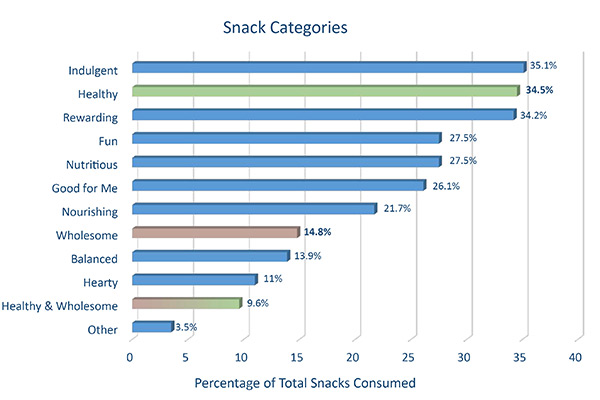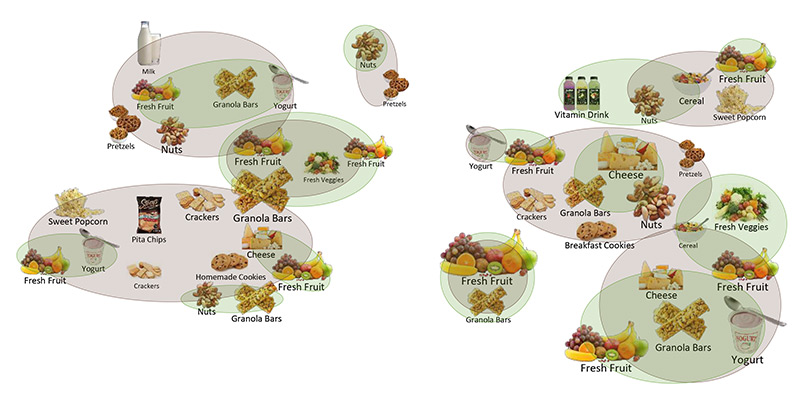Introduction
"Healthy" and "wholesome" are terms frequently used by consumers and manufacturers in the snacking category. However, the meanings and roles of these terms are not fully understood within the behavior of consumers. This research will allow the team to uncover the types of snacks consumers consider "healthy" and "wholesome" as well as the differences and intersections between these two ideas. The methodology utilized in this research allows the research team to discover attributes, consumer language, and sensory cues of “healthy” and “wholesome” within the snacking space. Understanding the meaning and language behind these terms will allow for better product marketability and more precise targeting of desired consumer spaces. We designed our food research to explore options for a new healthy or wholesome snack bite with fruit flavor, but before we could explore the snack bite landscape, we needed to determine how consumers differentiate between healthy and wholesome, if at all.
Objectives Include:
- Discover which snacks consumers consider "healthy" or "wholesome" and where they intersect.
- Explore the role of "healthy" and "wholesome" snacks in consumers' snacking behavior.
- Uncover attributes, consumer language, and sensory cues of the terms "healthy" and "wholesome" within the snacking space
- Examine each term’s independent characteristics and where they overlap
- Discover what consumers are looking for in a healthy/wholesome snack bite with fruit flavor
Methodology
Phase I: Quantitative Snack App
Quantitative data was collected using Blueberry’s Snack App - a mobile survey plaform. The research was conducted in the U.S., with geographically diverse respondents between the ages of 18-75. The subjects (n=150) were asked to log their snacks for 24 hours, and were asked 15 questions for each snack. Data capture included daypart, snack category, emotions before and after eating, satiety levels, and energy levels, among others. Data was analyzed by isolating healthy and wholesome snack categories individually and combined to find similarities and differences between the two. This data was then used to inform lines of questioning and stimuli for the focus groups.
Phase II: Qualitative Focus Groups
Respondents were asked to complete two pre-work assignments prior to the groups:
- Respondents spent a week journaling all of their snacking, answering several questions about each snack.
- ½ of respondents spent the next week uploading 6-10 photos they would categorize as healthy, and the other ½ of respondents spent the next week uploading 6-10 photos they would categorize as wholesome.
Four, 2-hour focus groups were conducted, two containing respondents who uploaded wholesome pictures, and two containing respondents who uploaded healthy pictures. The groups were separated by age, with a healthy and wholesome group conducted with each age range (18-24, and 30-55).
The graph below shows the percentage of snacks consumed from each category using data collected from the Blueberry Snack App. The total number of snacks logged was 345, and the total number of respondents was 150.

|
|
Wholesome PrioritiesDense
Blended Flavor
Familiar Ingredients
Less Processed
Textural Diversity
|
Healthy Priorities"Natural" Ingredients
Unprocessed
Singular Flavor
Limited Sweetness
Simplicity
Freshness
|
Conclusion
While the occasions for healthy and wholesome snacks are the same, there are some differences in the sensory attributes and emotional benefits of each. In developing a snack bite with a “healthy” or “wholesome” positioning, product development should focus on the prioritized sensory cues in order to create an aligned and satisfying experience.

